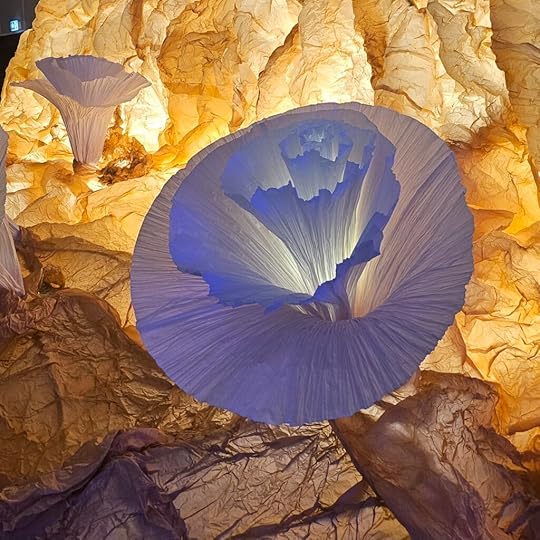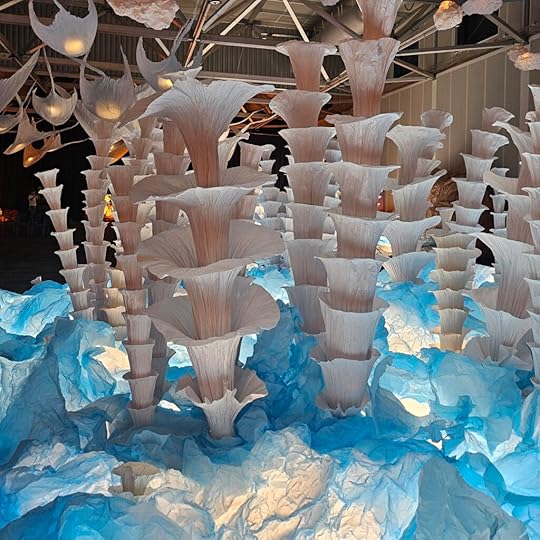L’Océan de Léa
I’m on vacation in Southern France, and yesterday we wandered into L’Océan de Léa, an immersive world crafted entirely from paper at the Centre des Congrès OcéaNice in Nice. The installation is a vast, dreamy seascape sculpted by the master origami-artist Junior Fritz Jacquet, and it’s definitely worthy of a visit.

Born in Haiti and now based in Paris, Jacquet has spent over 20 years transforming paper into sweeping sculptural landscapes. Often celebrated as a master of origami, he’s recognized by the Nippon Origami Association for evolving the art beyond crisp folds to embrace folded, crumpled, textured expression. His works have traversed the globe, from the Grand Palais to diplomatic venues.

What struck me most is Jacquet’s commitment to using reclaimed, industrial paper — discarded sheets collected from a closing factory — to compose monumental underwater formations. In doing so, he offers a sharp statement: art may arise from waste, resistance can be folded into beauty, and redemption can take shape in the ruin of our overconsumption.
This mode of papercraft as resistance insists we rethink materials: even what’s destined to be thrown away can become an instrument of wonder and environmental advocacy. The entire installation used perhaps ten tonnes of such salvaged paper, turned into creatures, reefs, and caverns in an ambitious four-month collaborative residency.

Stepping into the exhibition is like diving into a slow-motion dream. Hanging jellyfish drift overhead; manta-ray silhouettes glide through light; coral-like posidonia waves undulate along shimmering caves and grottos, all shaped from the same humble medium and in three shades of colour. The play of light — cool blues, warm ambers, soft whites — animates every fold. The delicacy of the material contrasts with the scale: small fragile forms composing an oceanic cathedral. It felt both soothing and stirring. Spanning 2,000 m², the installation invites quiet wandering and free-form imagination, never strict visual realism.
By engaging visitors not with charts or guilt‑laden messages, but with empathy and imaginative immersion, the exhibition gently stirs awareness of the ocean’s beauty and the urgency to preserve it. Jacquet’s ocean is silent, still, paper‑quiet, but its fragility echoes the vulnerability of marine environments. It reminds us that coral, fish, seaweed, and waves are delicate, and that emotional connection may be the most powerful invitation to conservation.

In our era of mass plastic pollution and ocean warming, L’Océan de Léa serves as both tribute and warning. It exemplifies how art can channel ecological consciousness while remaining accessible and enchantingly beautiful. Preserving the ocean isn’t just about policy but also about feeling. When we sit with paper‑sculpted reefs, or imagine manta rays gliding through light, our hearts align with what needs protecting. The exhibition asks us to translate that emotional bond into action.
If you’re in Nice before 14 September 2025, don’t miss this tender, visionary installation.



